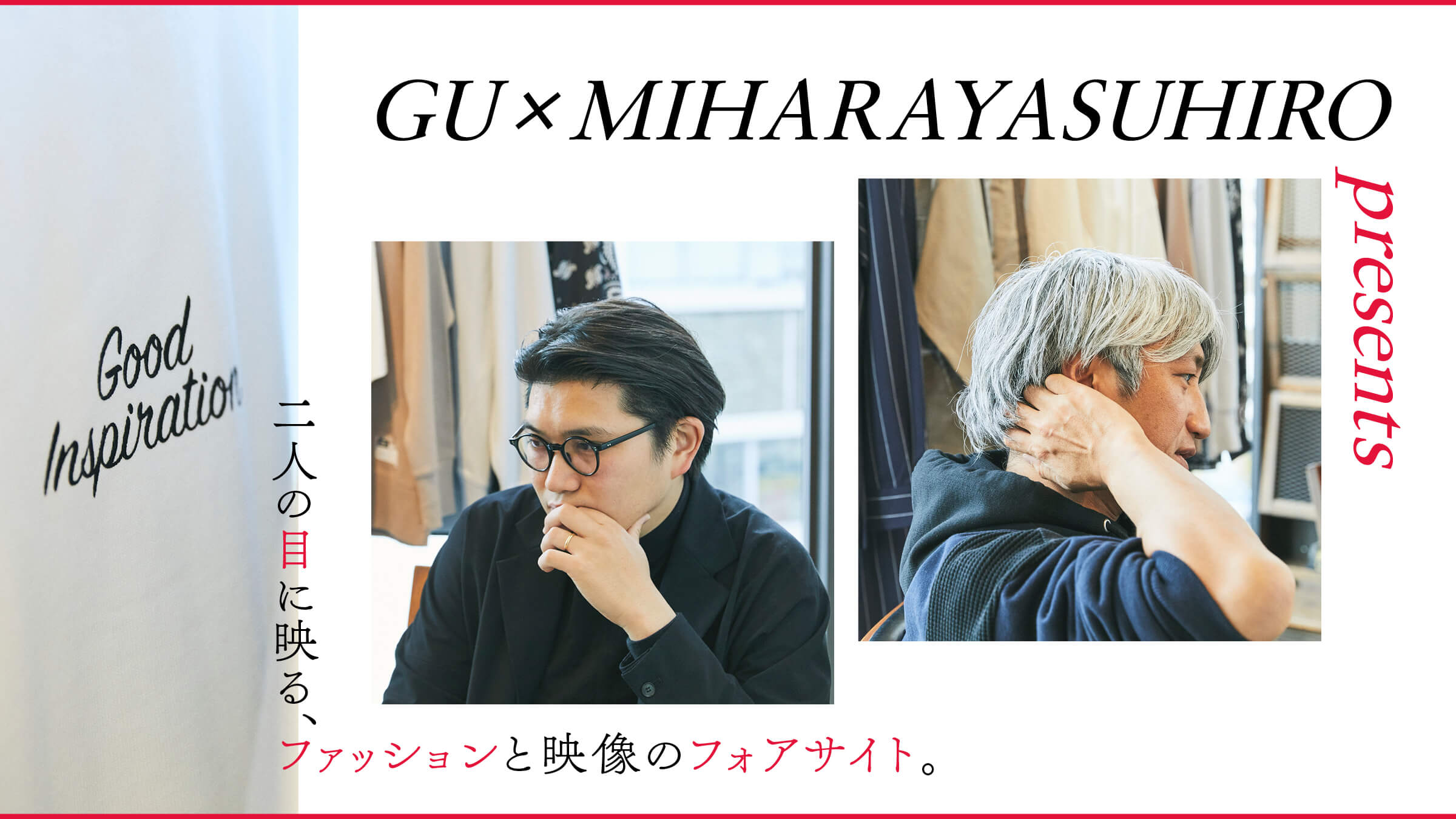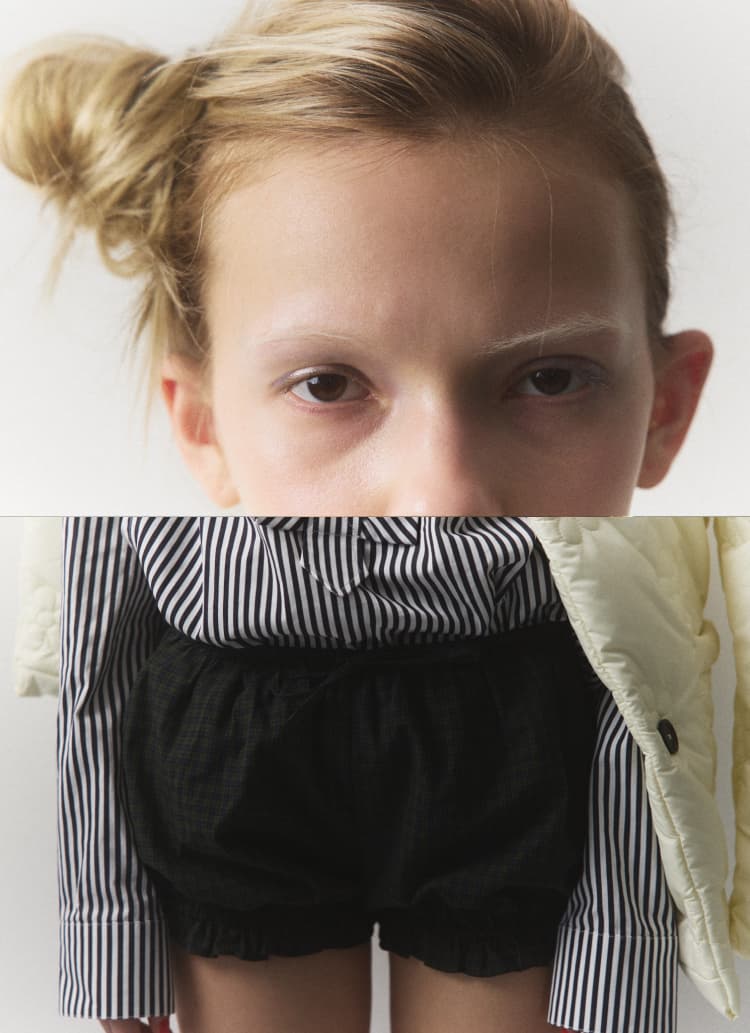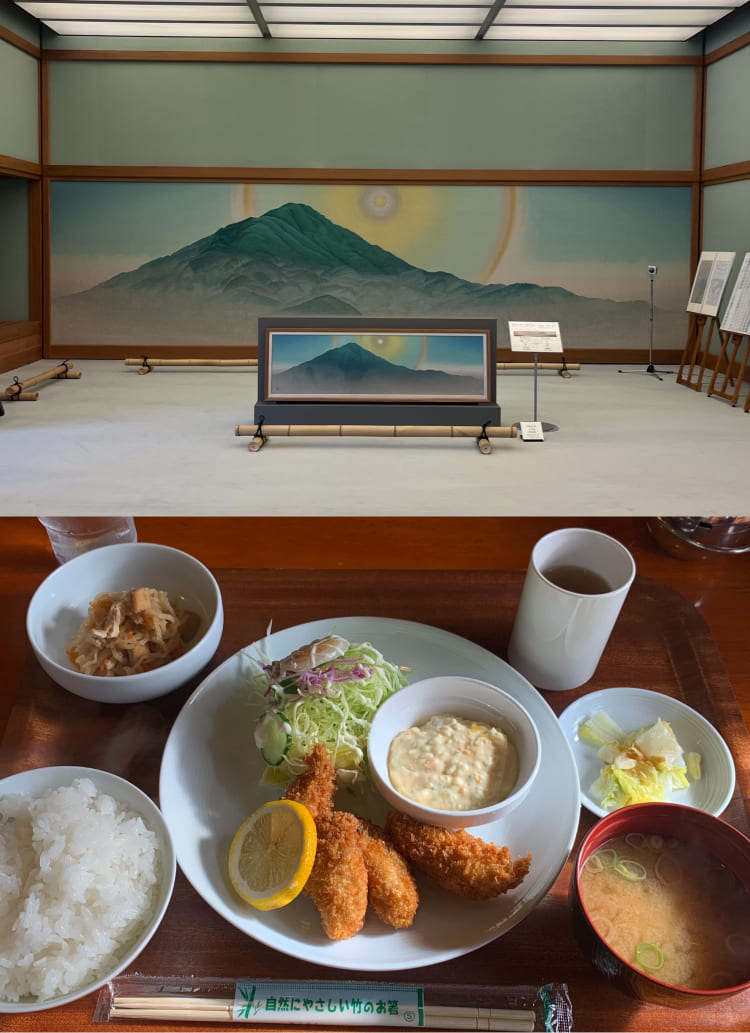What is collaboration?
I believe g.u. approached Mr. Mihara about this collaboration as well.
Mihara:g.u." first wanted to take on a challenge, didn't they? There was a trend called "sustainable," but we didn't want it to end up as a trend. Sustainable is still uncertain in many ways, and we made this product while considering sustainable from various angles, such as using stonewash as a print because it makes water dirty, or thinking that regular polyester would be better because recycled polyester is more labor-intensive and time-consuming to produce.

Open collar shirt, wide tapered pants ¥2,990+TAX each


Big sweatshirt ¥2,490 +TAX,
(Left) Original Sole Derby Shoes, (Right) Original Sole Sneaker ¥3,990 +TAX
Mihara:Also, I didn't want to make clothes for the general public. For example, the theme is about art students, but it is also a metaphor for me as an art student in the past and the next generation that will create the future. I said that I wanted to create a theme that evokes such a metaphor. So the entrance is rather serious (laughs).
I understand that this collaboration was driven by Mr. Mihara's thoughts and feelings.
Mihara:The word "collaboration" is often used in the fashion industry. But there is almost no chemical reaction that creates a new market or something new. All we have are examples where the name seems to precede the product. To put it another way, it is a buzz business. I think buzz is a way for information to flare up and then disappear in an instant, so I rather think it shouldn't be buzzy. It's not essential, and a brand that keeps pace with itself is more meaningful. Rather, it is more important to do well so as not to get buzzed.
Q: Did you experience any chemical reactions between Mr. Mihara and Mr. Hayashi this time?
Mihara:The reason I made an offer to Mr. Hayashi was that I had seen his work for a long time, and I admire Issey Miyake, but I also thought Mr. Hayashi's work at "Homme Prensse Issey Miyake" was also good. Mr. Hayashi's work is completely the latter.
What did you two talk about on the day of the event?

Forest:There was very little (laughs).
Mihara:I often use the example of an experiment conducted by a Russian ballet company and an English orchestra. The ballet company would create a 10-minute dance program, and the orchestra would play a 10-minute piece. Miraculously, the dance and the music came together in a way that was unintended. This is because we both have little information, but we use our imagination. If we follow the same storyboards, by the time the piece is finished, we are tired of it. I was also checking the monitors at the site and watching the work, thinking how amazing it was. Mr. Hayashi's images are stoic, and what he wants to convey frame by frame is clear and calculated. In a word, it makes sense.









